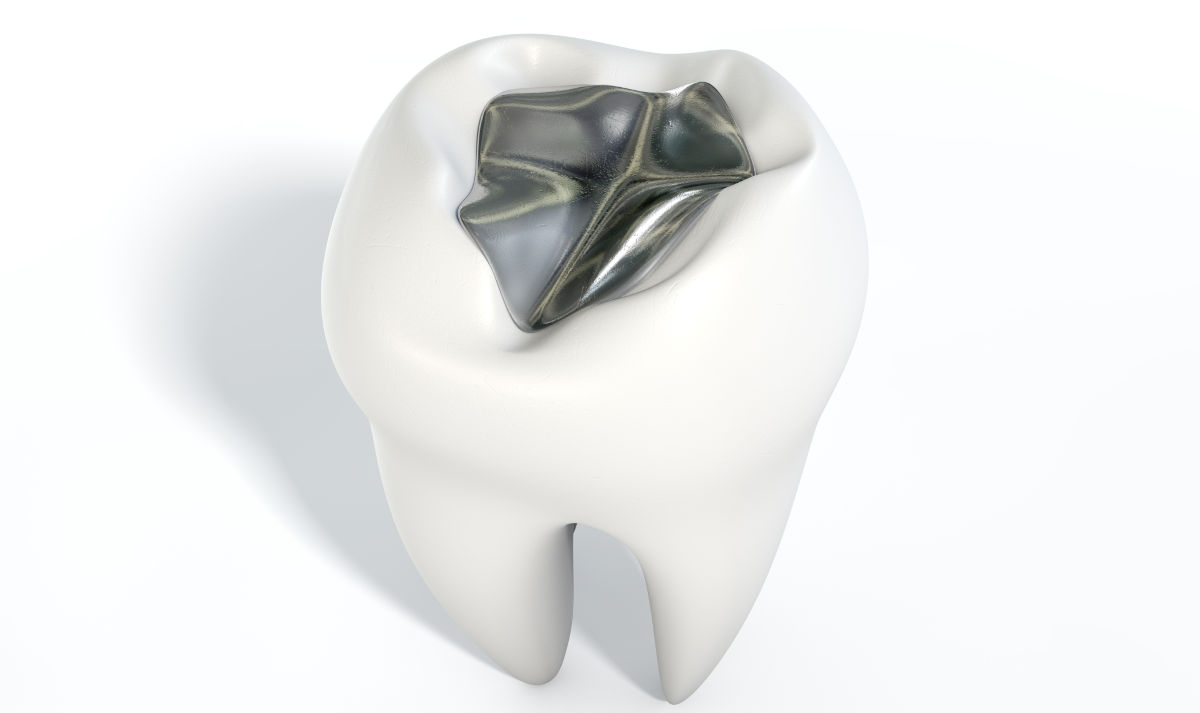Contents

Dental Amalgam Fillings: All About This Controversial Material
Dental amalgam fillings are a traditional technique for treating cavities. But are they still relevant today? Discover everything you need to know about this treatment.
If you have ever had significant cavities, it is likely that your dentist placed an amalgam filling, also known as a "silver filling."
This silvery filling material, widely used for over 150 years, is the subject of a heated debate due to its mercury content, a metal that is toxic to the body.
Discover everything you need to know about dental amalgam fillings, their advantages, their risks, and the possible alternatives.
What Exactly Is a Dental Amalgam?
When a tooth is hollowed out by a cavity, the dentist must fill the cavity after removing the infected tissue. To do this, they can use different filling materials:
- Amalgams, composed of a metal alloy (silver, copper, tin, zinc) and mercury.
- Resin-based composites.
- Glass ionomer cements.
- Hybrid materials (composites and glass ionomer).
Amalgam has many advantages: it is very strong, durable, watertight, and inexpensive. However, its silver color makes it aesthetically unpleasing, which is why it is mainly used for posterior teeth (molars and premolars).
What Are the Health Risks of Mercury Fillings?
Mercury is a heavy metal whose toxicity is well known. According to the WHO, it is one of the top ten chemicals of major public health concern. At high doses, mercury can cause serious lung, kidney, and neurological damage.
However, the danger of dental amalgams remains controversial. The FDA has concluded that the low levels of mercury vapor released from amalgam fillings are not harmful to the general population. While the use of amalgam is declining, the FDA does not recommend removing existing amalgam fillings that are in good condition unless it is deemed medically necessary by a healthcare professional.
As a precaution, the placement of amalgam is discouraged in certain individuals:
- Pregnant or nursing women.
- People with a known allergy to mercury.
- Patients with renal insufficiency.
- Immunocompromised patients.
What Are the Pros and Cons of Amalgam Fillings?
To summarize, here are the main strengths and weaknesses of dental amalgams:
Advantages:
- Very affordable cost.
- Excellent value for money.
- High strength and wear resistance.
- Durability (up to 15-20 years).
- Seals well to protect the tooth.
Disadvantages:
- Requires more removal of healthy tooth structure.
- Unaesthetic (metallic gray color).
- Risk of mercury allergy (rare).
- Chronic release of low doses of mercury vapor.
Are There Alternatives to Amalgams?
If you need to treat a cavity but do not want an amalgam filling, know that there are other mercury-free filling materials. Ask your dentist for advice to choose the most suitable solution for your case.
| Materials | Advantages | Disadvantages |
|---|---|---|
| Composite Resins | Aesthetic (tooth-colored) Preserves tooth structure Bonds well with the tooth | Less strong than amalgam Stains more easily Higher cost |
| Glass Ionomer Cements | Naturally adheres to enamel Releases fluoride Biocompatible | Less wear-resistant Less aesthetic Sensitive to moisture during placement |
| Ceramic Inlays/Onlays | Highly aesthetic Strengthens the tooth Excellent longevity | Requires more tooth preparation Meticulous bonding technique High cost |
What Is the Price of Dental Fillings?
The cost of a filling depends on several factors: the extent of the cavity, the type of tooth, the dentist's fees... On average, expect to pay between $50 and $150 for an amalgam filling, versus $90 to $250 for a composite filling.
Fortunately, fillings are typically covered by dental insurance plans, often as a "basic" restorative service with coverage ranging from 70% to 80% after the deductible. The remainder is your responsibility unless you have a plan that covers it fully.
Should You Have Your Old Fillings Removed?
With the controversy around mercury, some people are tempted to have their old amalgams removed. However, health authorities like the FDA advise against this if you have no particular problem. Indeed, the removal of an amalgam filling:
- Releases a significant amount of mercury vapor during drilling.
- Weakens the tooth, which has already been extensively drilled.
- May increase the risk of recurrent cavities and necrosis.
Furthermore, this procedure can be costly and may not be covered by insurance if it is not deemed medically necessary. It is therefore better to keep a filling that is in good condition rather than wanting to remove it at all costs.
Conclusion
Despite the controversy over mercury, dental amalgams remain an effective and economical solution for treating cavities. Scientific studies have not shown a proven health danger at the doses used in dentistry. If you have any doubts, discuss them with your dentist, who can advise you on the best option for your situation. The most important thing is to maintain good daily oral hygiene to prevent cavities from forming in the first place!
